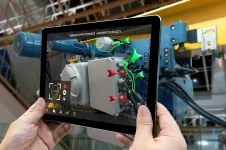


AR technology can be used to superimpose digital information onto the real world, providing workers with a virtual map of oil and gas facilities, equipment and processes. AR technology has also become commonly used in other applications, like the entertainment industry. However, for AR to work seamlessly, a reliable and fast network connection is crucial. This is where 5Gstore comes in, offering cellular modems, routers, antennas and signal boosters to ensure a stable and strong connection even in remote locations. They also provide failover and bandwidth bonding solutions, which can help prevent downtime and ensure that critical information is always available.
Contact Us for more info.
5G addresses challenges in augmented reality by providing high network capacity, low latency, mobility support, multi-device connectivity and leveraging edge computing for real-time rendering and interactions. For AR to work seamlessly, real-time computing needs to be fast and efficient with little to no latency. 5G technology introduces a fast and reliable solution to this dilemma.
5G enhances augmented reality experiences by providing high-speed connectivity, low latency, and the ability to support multi-user interactions, resulting in seamless, immersive, and collaborative AR experiences.
Practical applications of 5G-powered augmented reality include remote collaboration, retail and e-commerce, education and training, tourism and entertainment, and maintenance and repair industries. With reliable 5G technology that can be brought to more remote locations and offer reliability, AR can be introduced to more environments and become more widely used.
Augmented reality (AR) refers to the integration of virtual elements or digital content into the real-world environment, enhancing the user's perception and interaction with their surroundings. In the context of 5G, AR applications leverage the high-speed and low-latency capabilities of 5G networks to deliver immersive and seamless AR experiences.